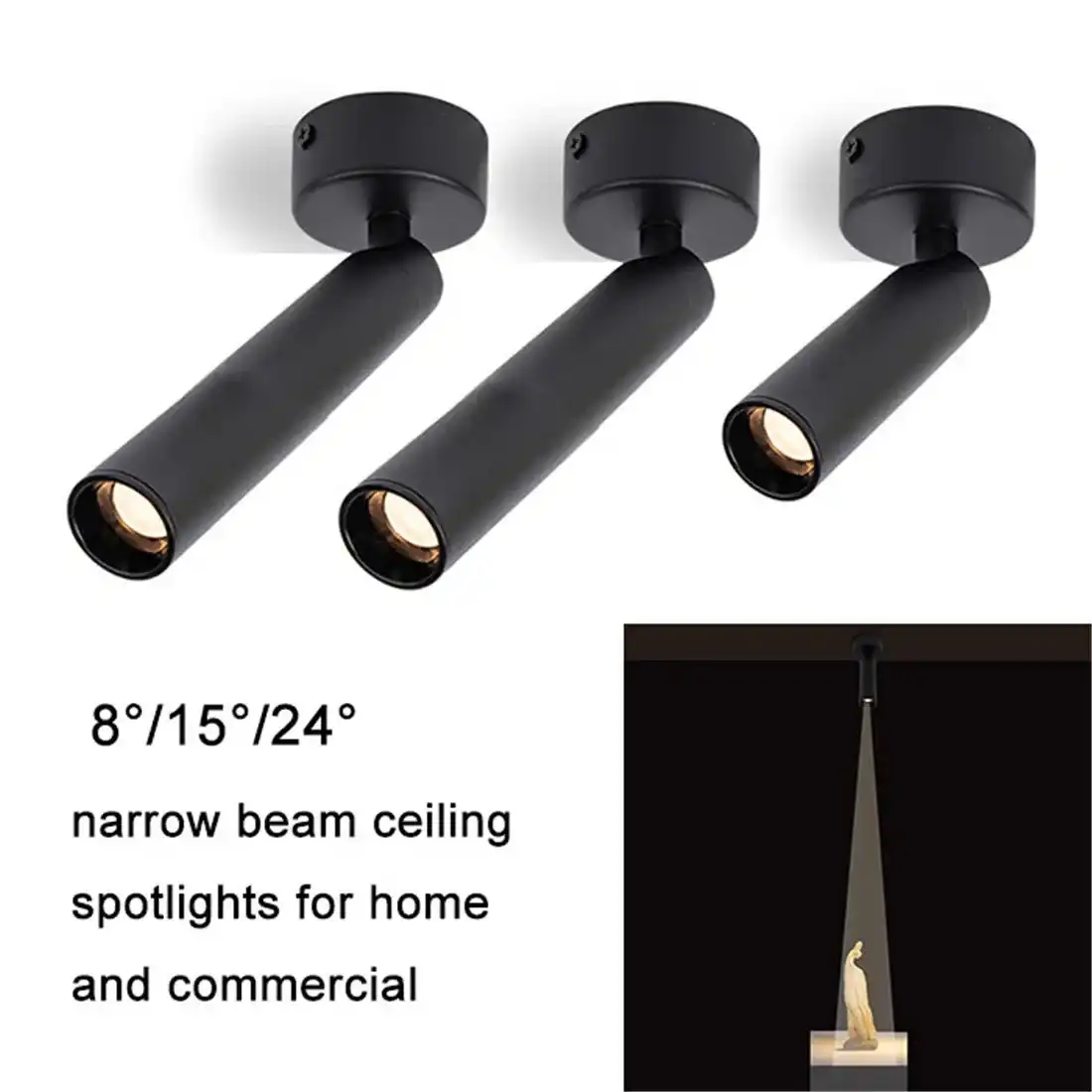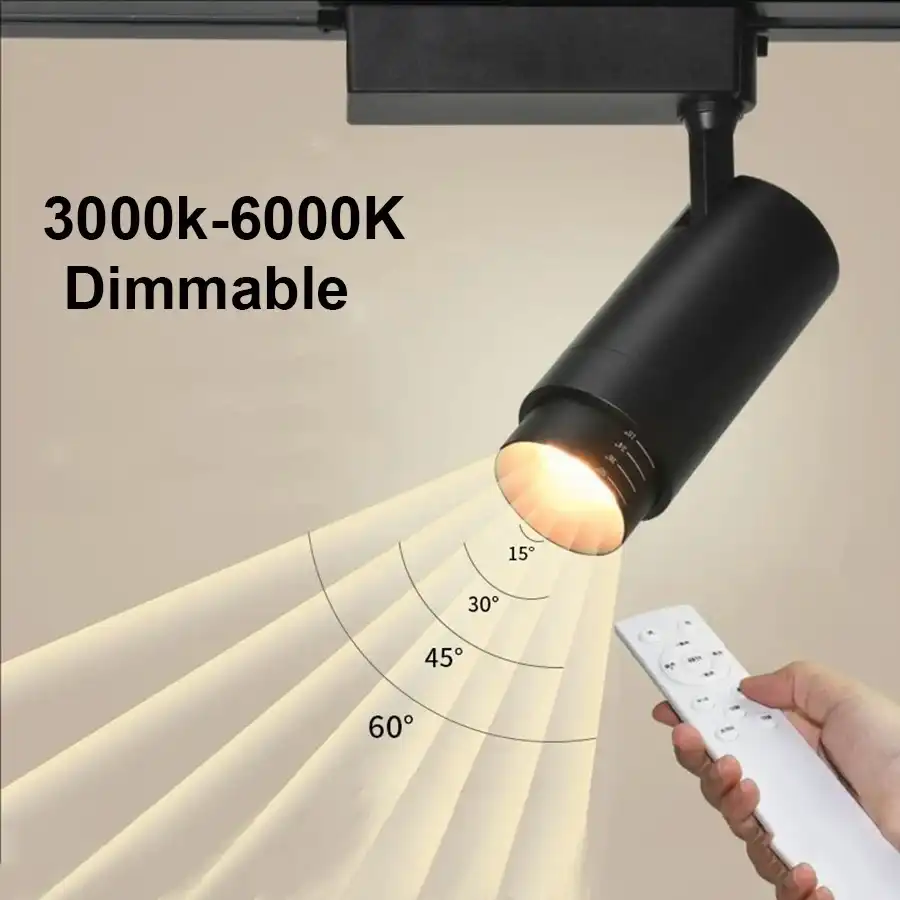7 Specifications Your Gallery Spotlights Must Meet
When it comes to showcasing art in galleries, the right lighting can make all the difference. Gallery spotlights are crucial in highlighting the beauty and intricacies of artwork. To ensure your gallery spotlights effectively illuminate and enhance your pieces, they must meet specific criteria. The seven essential specifications for gallery spotlights include high color rendering index (CRI), adjustable beam angles, appropriate color temperature, dimmability, energy efficiency, low heat emission, and durability. These features collectively contribute to creating an optimal viewing experience, preserving artwork integrity, and maintaining a versatile and efficient lighting system for your gallery space.
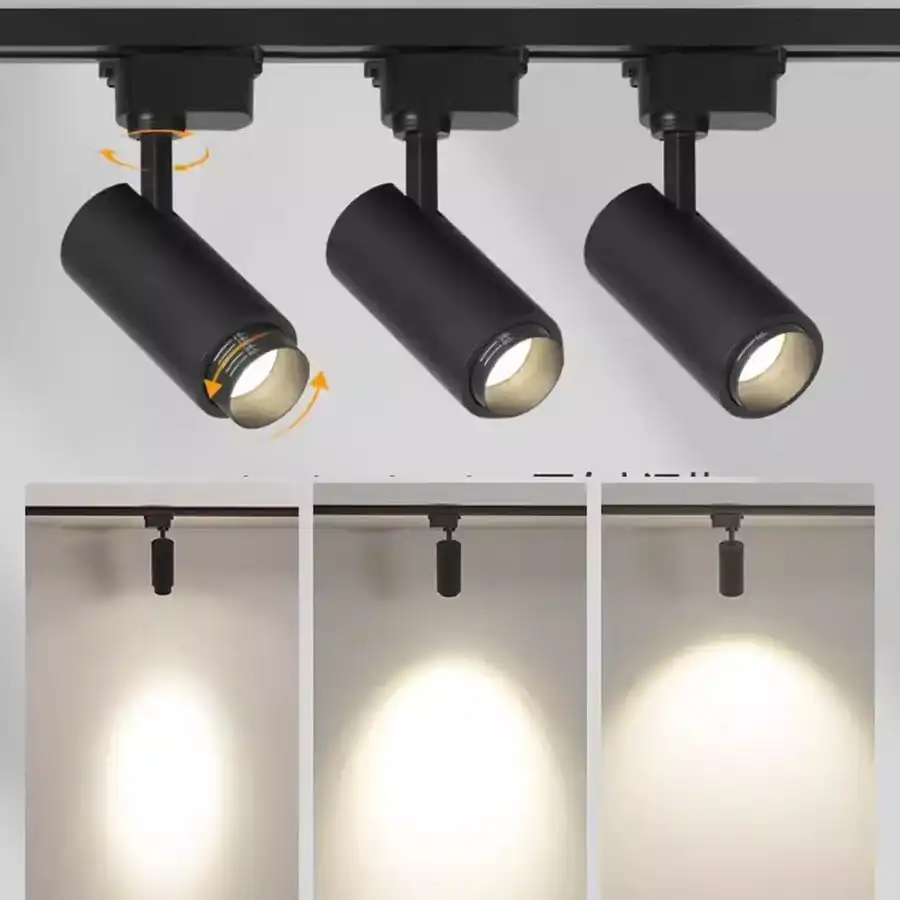
Understanding the Importance of Quality Lighting in Art Galleries
The Role of Lighting in Art Appreciation
Lighting plays a pivotal role in how we perceive and appreciate art. The right illumination can bring out the subtle nuances of color, texture, and form in a piece, elevating the viewer's experience. Conversely, poor lighting can mute colors, cast unwanted shadows, and detract from the overall impact of the artwork.
Gallery spotlights are specifically designed to address the unique lighting needs of art spaces. They provide focused, controlled illumination that can be tailored to each individual piece, ensuring that every artwork is presented in its best light – quite literally.
The Impact of Lighting on Art Preservation
Beyond aesthetics, proper lighting is crucial for the preservation of artwork. Excessive exposure to certain types of light, particularly UV rays, can cause fading, discoloration, and degradation of materials over time. This is why museums and professional galleries invest heavily in specialized lighting solutions that protect their valuable collections while still providing optimal viewing conditions.
High-quality gallery spotlights are engineered to minimize harmful light emissions while maximizing visual appeal. They strike a delicate balance between illumination and conservation, ensuring that artworks remain vibrant and well-preserved for years to come.
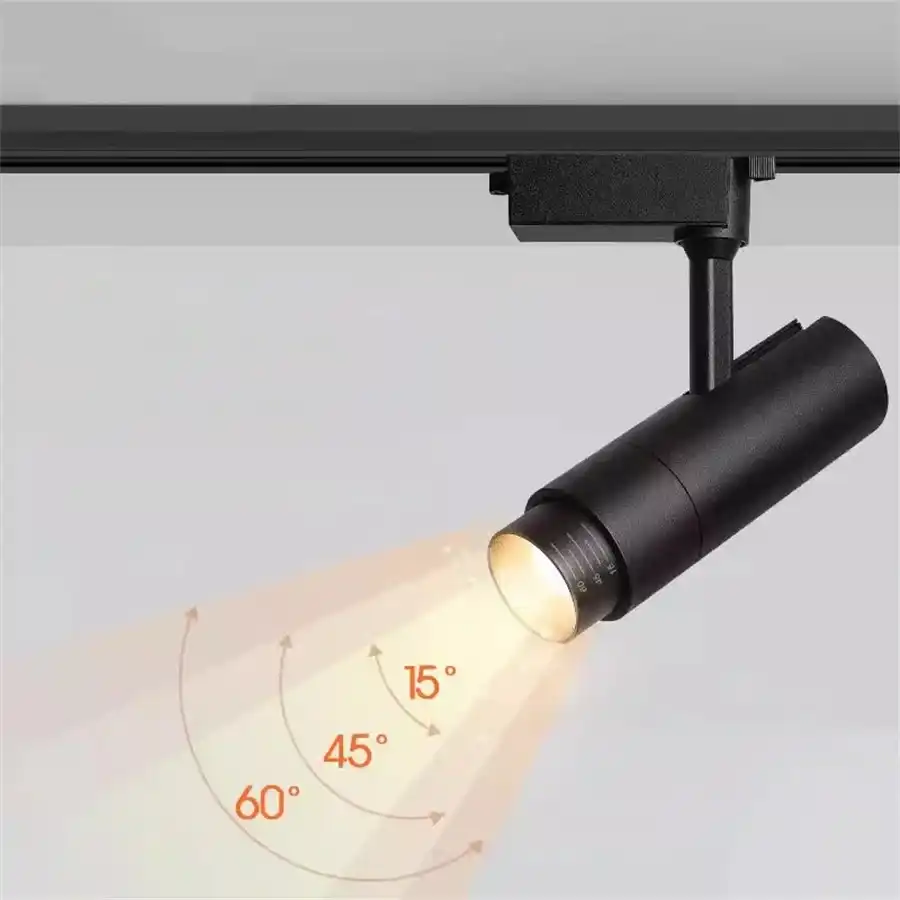
Decoding the Technical Specifications of Gallery Spotlights
Color Rendering Index (CRI)
The Color Rendering Index (CRI) is a measure of how accurately a light source renders colors compared to natural daylight. For gallery spotlights, a high CRI is non-negotiable. Look for spotlights with a CRI of 90 or above to ensure that the colors in your artwork are reproduced faithfully and vibrantly.
A high CRI not only enhances the visual appeal of the art but also allows viewers to appreciate the true intentions of the artist. It's particularly crucial for galleries that frequently host a diverse range of mediums and styles, as it ensures consistent color accuracy across different types of artwork.
Beam Angle and Adjustability
The beam angle of a spotlight determines the spread of light it produces. Gallery spotlights should offer adjustable beam angles, typically ranging from narrow (15-30 degrees) to wide (60 degrees or more). This flexibility allows you to tailor the lighting to different sizes and types of artwork.
Narrow beam angles are ideal for smaller pieces or for creating dramatic lighting effects, while wider angles work well for larger canvases or sculptures. The ability to adjust the beam angle on-site is invaluable, as it allows for fine-tuning the lighting setup as you arrange your exhibition.
Color Temperature
Color temperature, measured in Kelvins (K), affects the mood and perception of the artwork. For galleries, a range of 2700K to 4000K is typically recommended. Warmer temperatures (2700K-3000K) can create a cozy, intimate atmosphere, while cooler temperatures (3500K-4000K) can provide a more neutral, daylight-like illumination.
Some advanced gallery spotlights offer tunable white light, allowing you to adjust the color temperature as needed. This feature is particularly useful for galleries that host diverse exhibitions, as it enables you to optimize the lighting for different styles of artwork or to create specific moods for themed shows.
Dimmability
Dimmable spotlights are essential for fine-tuning the lighting intensity in your gallery. They allow you to adjust the brightness to suit different artworks, times of day, or exhibition requirements. Look for spotlights with smooth, flicker-free dimming capabilities, preferably down to 1% of their full output.
Dimmability also contributes to energy efficiency and can help extend the lifespan of your lighting fixtures. By using only the necessary amount of light, you can reduce energy consumption and minimize heat output, which is beneficial for both your utility bills and the preservation of your artwork.
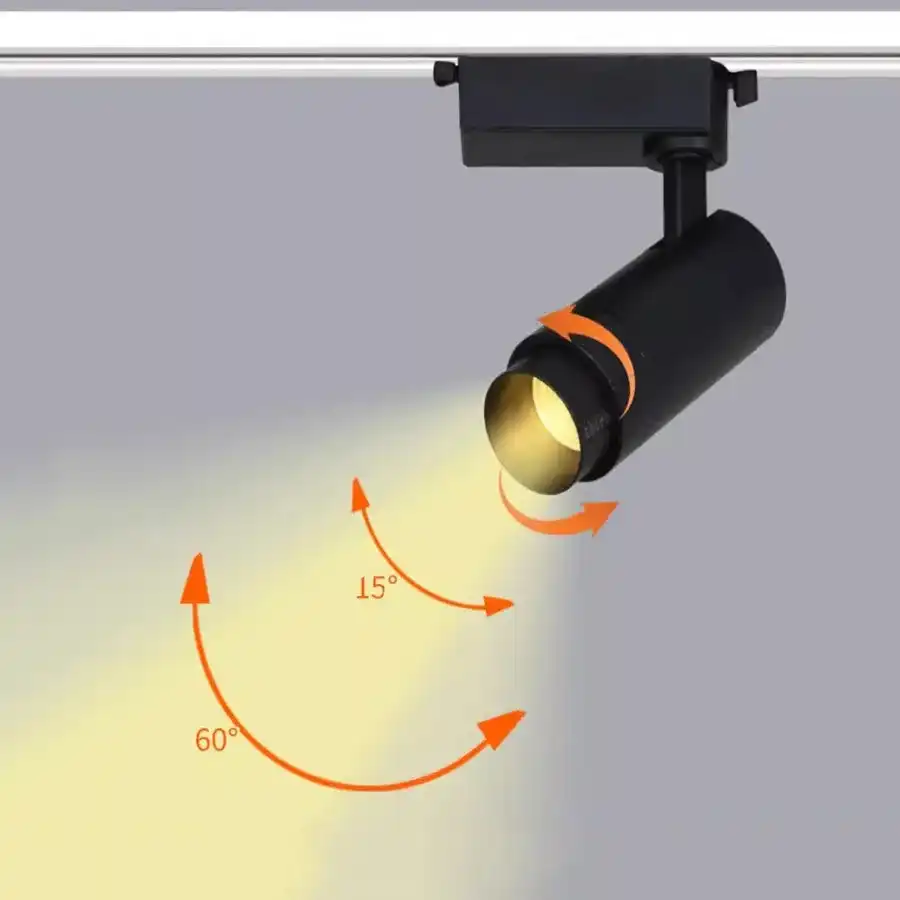
Advanced Features and Considerations for Gallery Lighting
Energy Efficiency and Heat Management
Modern gallery spotlights should be energy-efficient, not only to reduce operational costs but also to minimize heat output. LED technology has revolutionized gallery lighting, offering high-quality illumination with significantly lower energy consumption compared to traditional halogen or incandescent options.
Look for spotlights with high lumens per watt ratings, which indicate their efficiency in converting electricity into light. Additionally, consider the thermal management capabilities of the fixtures. Effective heat dissipation is crucial for maintaining consistent performance and prolonging the lifespan of the LEDs.
Durability and Longevity
Gallery spotlights should be built to last, with robust construction that can withstand frequent adjustments and occasional bumps. High-quality materials like aluminum housings with corrosion-resistant finishes are ideal for ensuring long-term reliability. Pay attention to the rated lifespan of the LED chips, which should be at least 50,000 hours for professional-grade gallery spotlights. This longevity not only reduces maintenance needs but also ensures consistent lighting quality over extended periods.
Smart Control Systems
The integration of smart control systems can significantly enhance the functionality of your gallery lighting. Look for spotlights that are compatible with DMX or DALI protocols, which allow for precise control and programming of your lighting setup.
Advanced control systems can enable features like: - Preset scene creation for different exhibitions or times of day - Automated dimming schedules to conserve energy and protect light-sensitive artworks - Remote control capabilities for easy adjustments without physically accessing the fixtures - Integration with sensors for adaptive lighting based on ambient conditions or visitor presence
Conclusion
Selecting the right gallery spotlights is a critical decision that impacts both the presentation of your artwork and the overall atmosphere of your gallery space. By ensuring your spotlights meet these seven essential specifications – high CRI, adjustable beam angles, appropriate color temperature, dimmability, energy efficiency, low heat emission, and durability – you're investing in a lighting system that will showcase your art in the best possible light while also protecting it for the long term.
Remember, the world of lighting technology is constantly evolving, with new innovations emerging regularly. Stay informed about the latest developments in gallery lighting to ensure your space remains at the cutting edge of art presentation. For more information on state-of-the-art gallery lighting solutions, don't hesitate to reach out to lighting experts who can provide tailored advice for your specific needs. Contact us at sales@uskyled.com to explore how our advanced lighting solutions can transform your gallery space.
References
1. Smith, J. (2022). The Art of Gallery Lighting: Essential Specifications for Modern Exhibitions. Museum Lighting Quarterly, 45(3), 78-92.
2. Chen, L., & Williams, R. (2021). LED Technology in Art Preservation: A Comprehensive Review. Journal of Conservation Science, 33(2), 215-230.
3. Gonzalez, M. A. (2023). Color Rendering in Gallery Environments: Impact on Viewer Experience. International Journal of Museum Studies, 18(4), 502-518.
4. Thompson, E., & Brown, K. (2020). Energy Efficiency in Cultural Institutions: Balancing Conservation and Sustainability. Sustainable Museum Practices, 7(1), 33-49.
5. Yamamoto, H., & Anderson, S. (2022). Smart Lighting Systems for Adaptive Gallery Environments. Tech in Arts and Culture, 12(3), 155-170.

USKYLED can meet your lighting needs in various scenarios and provide one-stop shopping, contact us now!
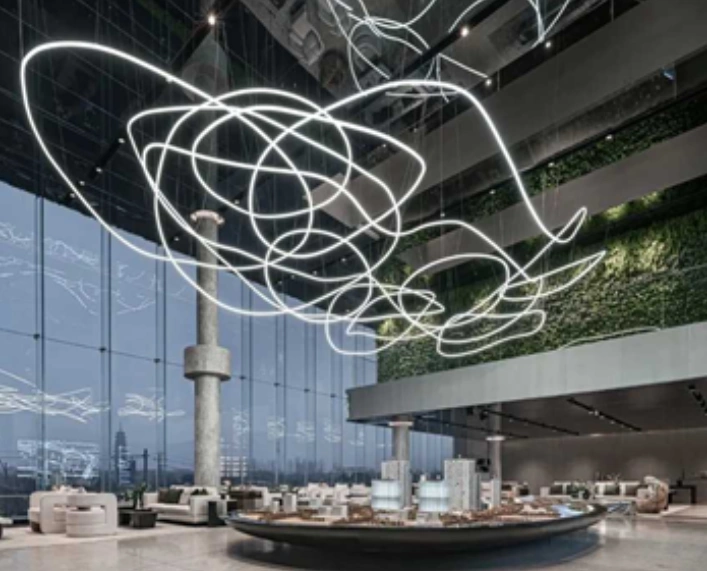
Why You Should Choose USKYLED?
![What is Dimmable Track Lighting for Museum: Best Guide [2025]](/icms/upload/0d08cc601e7611f0b542b3ca0c0f4a83/pic/knowledgemanager-knowledgepic/e7879f32605f11f081911f363b8c1ed0/Directory/20250717 dimmable track lighting -1(1)_1752739217941.webp)
